1. The Essence of a Spiritual Garden: What It Means
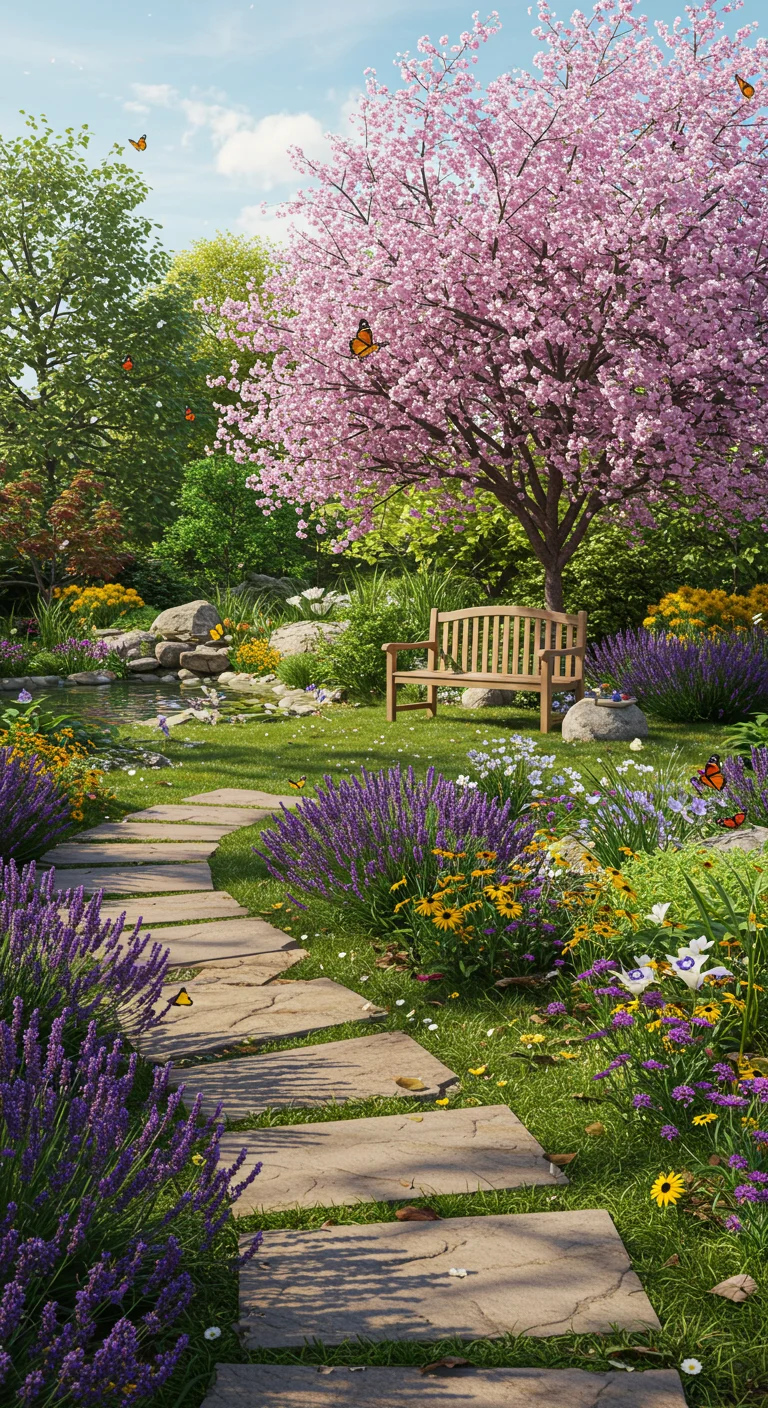
A spiritual garden is a serene space designed to foster tranquility, reflection, and connection with nature and oneself. It embodies the essence of mindfulness, encouraging visitors to engage with their surroundings through meditation, contemplation, or simply enjoying the beauty of the flora and fauna. Incorporating elements such as fragrant herbs, vibrant flowers, and calming water features can enhance the atmosphere, creating a sanctuary that promotes inner peace. Pathways of natural stones or soft grass invite wandering and exploration, while secluded nooks with comfortable seating offer perfect spots for introspection and prayer. By consciously selecting plants and decor that resonate with personal beliefs or spiritual practices, a spiritual garden becomes a unique manifestation of one’s inner journey, guiding individuals towards harmony and self-discovery.
2. Choosing the Perfect Location: Sunlight, Shade, and Serenity
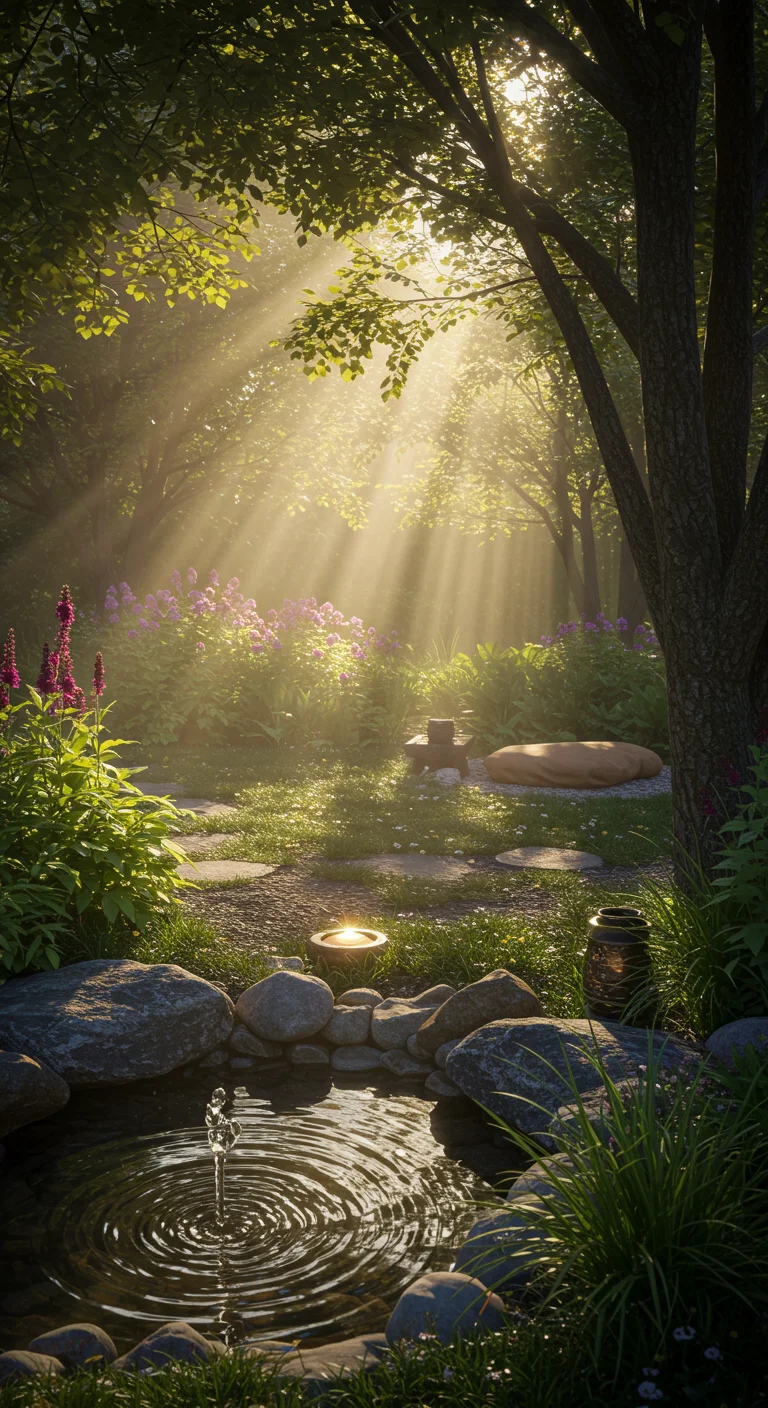
When selecting the ideal location for your spiritual garden sanctuary, consider the balance of sunlight, shade, and tranquility. Observe how sunlight traverses your space throughout the day; a spot that receives morning light can invigorate your spirit, while afternoon shade may provide a perfect retreat from the heat. Look for areas that are naturally peaceful, perhaps shaded by trees or sheltered by shrubs, where you can meditate or reflect without distractions. Incorporate elements that promote serenity, like a gentle water feature or fragrant flowers, to enhance the sensory experience. Ultimately, the right location should resonate with your personal sense of peace and connection to nature, allowing for contemplation and rejuvenation in your spiritual practice.
3. Designing Sacred Spaces: Paths That Lead to Peace
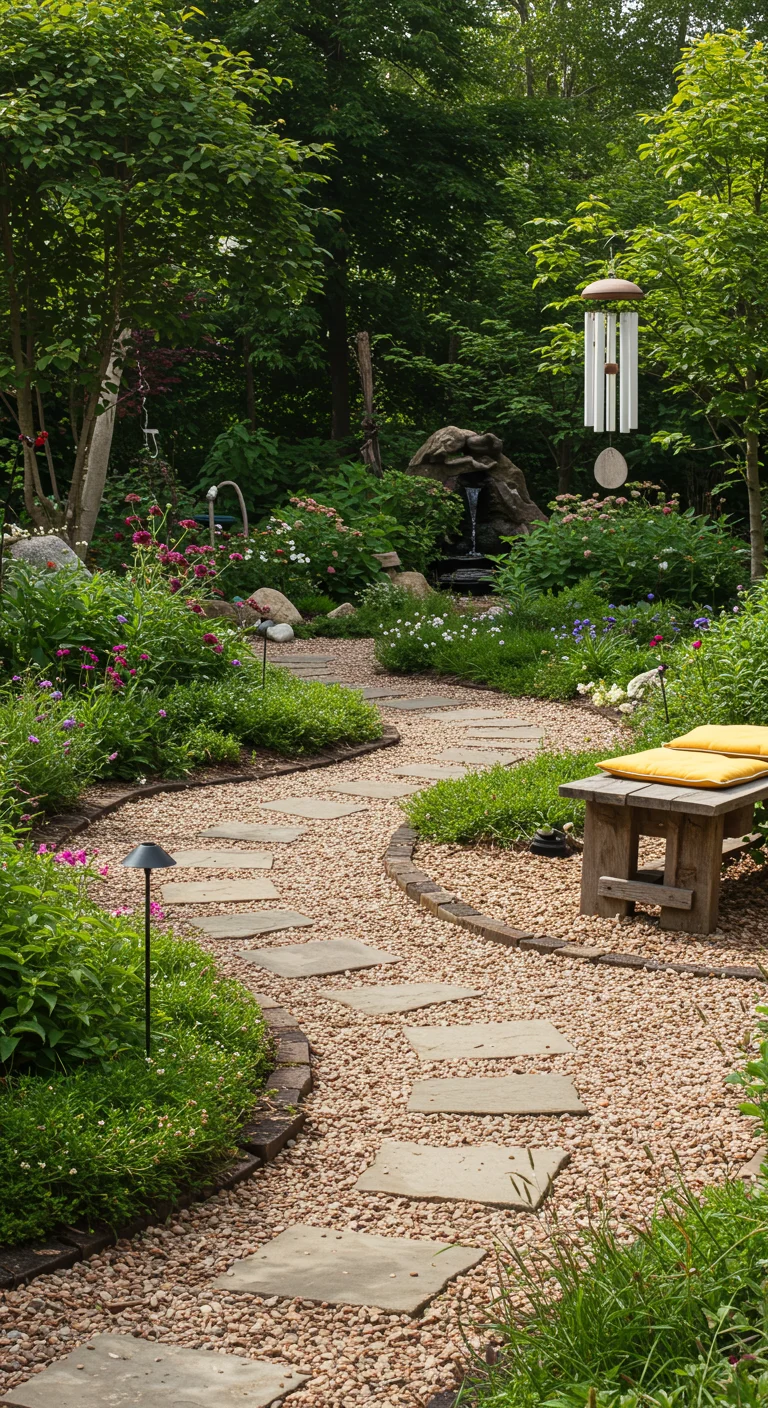
Designing sacred spaces within your spiritual garden sanctuary is essential to cultivating an atmosphere of peace and reflection. Begin by creating meandering paths using natural materials like gravel, stepping stones, or mulch, which invite contemplation as one walks through the garden. Incorporating gentle curves rather than straight lines can enhance the feeling of tranquility and lead the mind to a more meditative state. Surround these paths with fragrant plants, soft grasses, and vibrant flowers that engage the senses and encourage stillness. Consider adding seating areas, such as rustic benches or a cozy nook with cushions, where one can pause, breathe, and connect with nature. Finally, accentuate the space with calming elements like a small water feature, wind chimes, or artful sculptures, which can serve as focal points for mindfulness and spiritual reflection.
4. Elemental Harmony: Incorporating Earth, Air, Fire, and Water
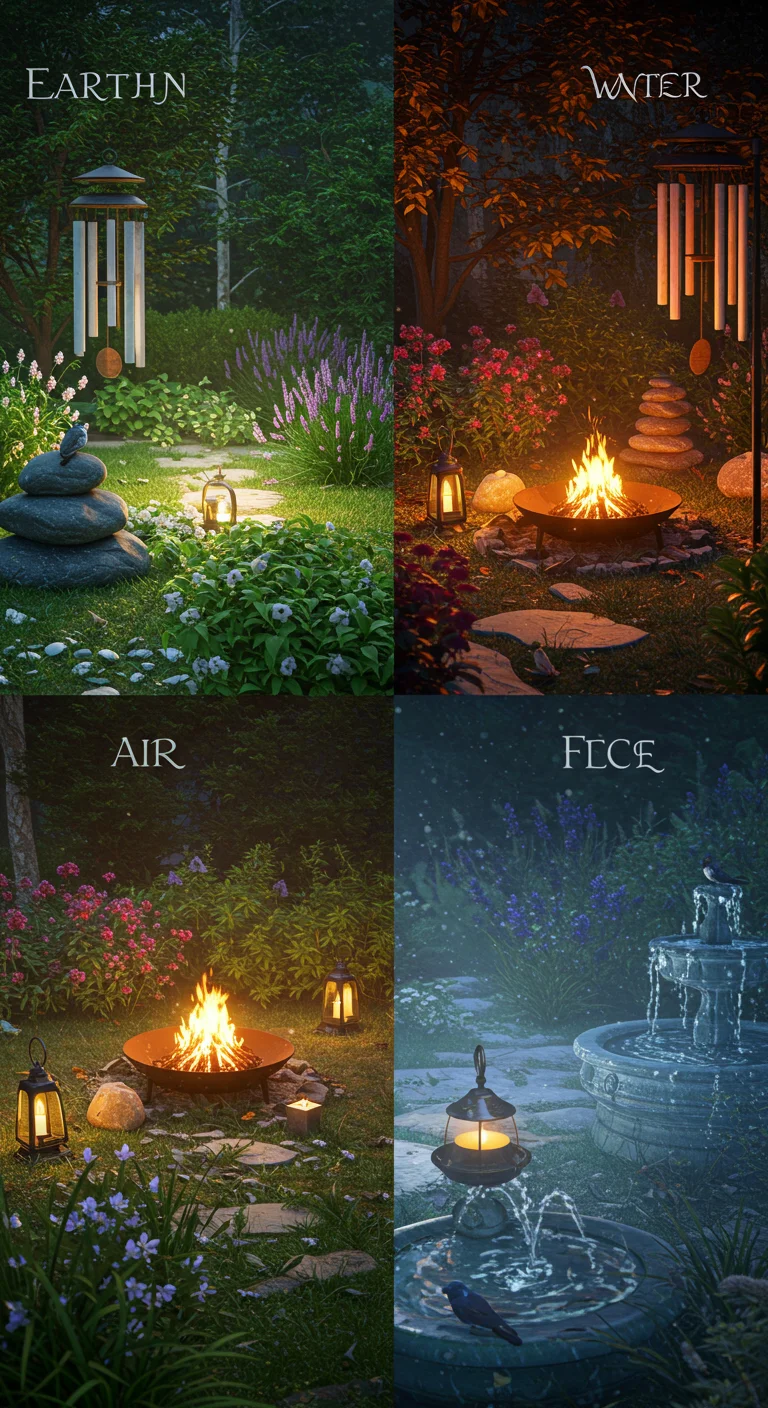
To create a serene atmosphere in your spiritual garden sanctuary, harmonize the four classical elements: Earth, Air, Fire, and Water. Start by designating areas for each element; for Earth, incorporate rich soil with vibrant plants and stones that ground the space. For Air, choose open spaces or install wind chimes to create soothing sounds. Fire can be represented with a small fire pit or lanterns that illuminate your garden at night, symbolizing transformation and energy. Finally, introduce Water with a small fountain or birdbath, inviting tranquility and reflection. This balance not only enhances the garden’s aesthetic but also fosters a deeper connection to nature, encouraging mindfulness and spiritual growth.
5. Plants with Purpose: Herbs for Healing and Meditation
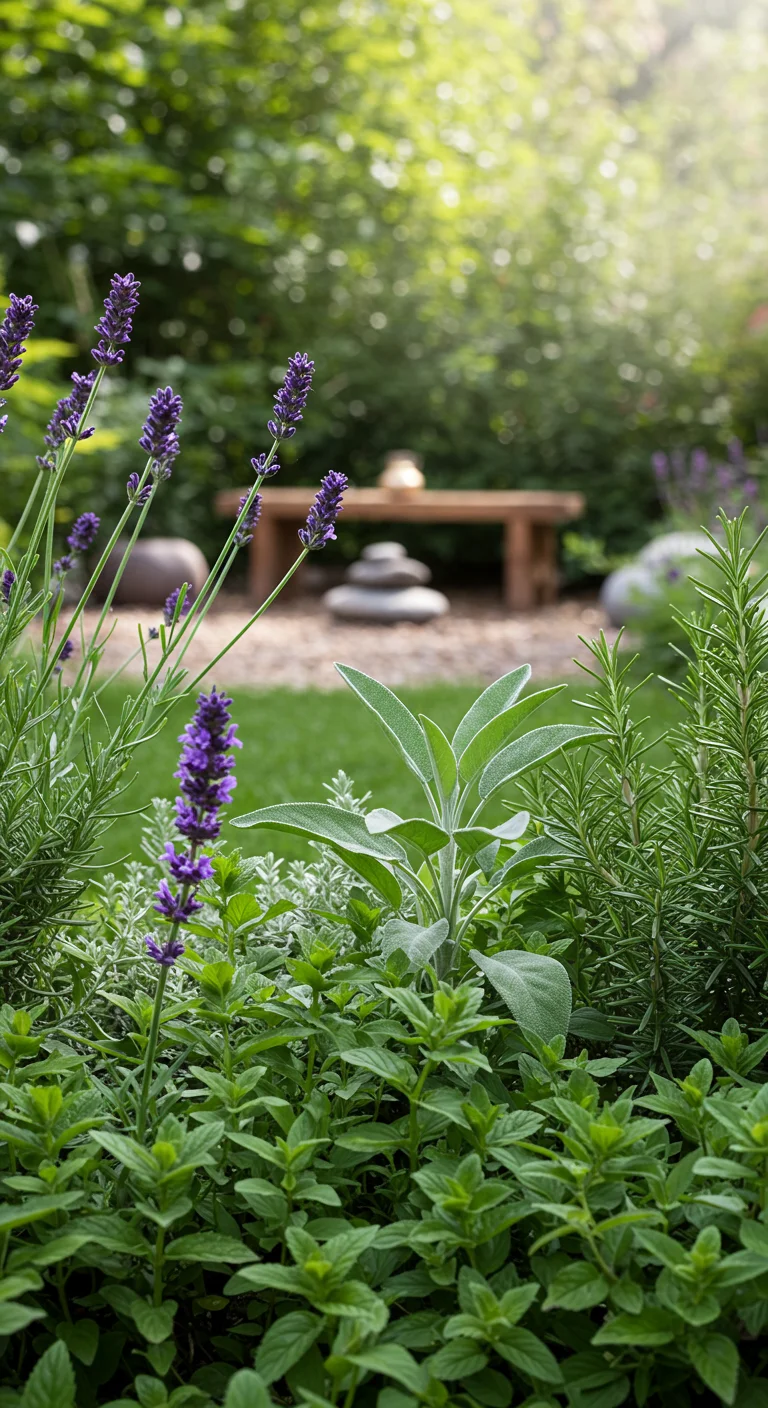
Herbs not only enhance the flavors of your meals but also serve as powerful allies in healing and meditation practices. Consider incorporating herbs like lavender for its calming properties, which can aid in reducing stress and promoting restful sleep. Sage, often used in cleansing rituals, is excellent for enhancing mental clarity and focus, making it ideal for meditation. Peppermint can invigorate the mind and body, providing a refreshing boost during your spiritual practices. Additionally, rosemary is known for its ability to enhance memory and concentration. By creating a dedicated herbal corner in your garden, you can cultivate these plants to support your wellness journey, whether it’s through aromatic teas, essential oils, or simple fresh leaves during meditation sessions.
6. Color Psychology: Choosing Flowers for Spiritual Vibes
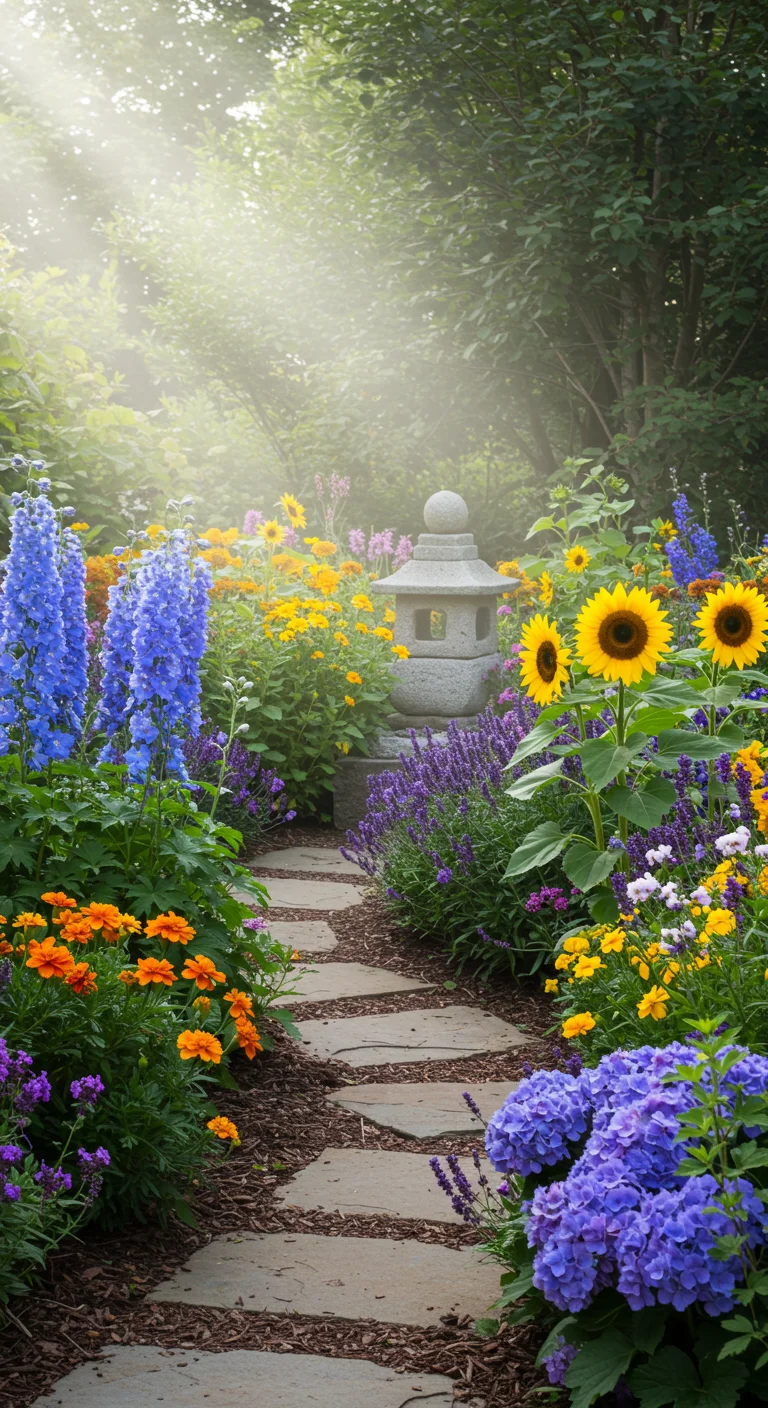
Color psychology plays a vital role in creating a spiritual garden sanctuary, as different hues evoke specific emotions and energies. For instance, blue flowers, such as delphiniums and hydrangeas, promote tranquility and serenity, making them ideal for meditation areas. Yellow blooms, like sunflowers and marigolds, inspire joy and positivity, enhancing the uplifting atmosphere of your sanctuary. Meanwhile, purple flowers, such as lavender and violets, are associated with spirituality and intuition, fostering a deeper connection to one’s inner self. By carefully selecting flowers based on their colors and the feelings they elicit, you can cultivate a spiritual space that resonates with peace, joy, and enlightenment, inviting harmony into your garden retreat.
7. The Power of Scent: Aromatherapy in Your Garden
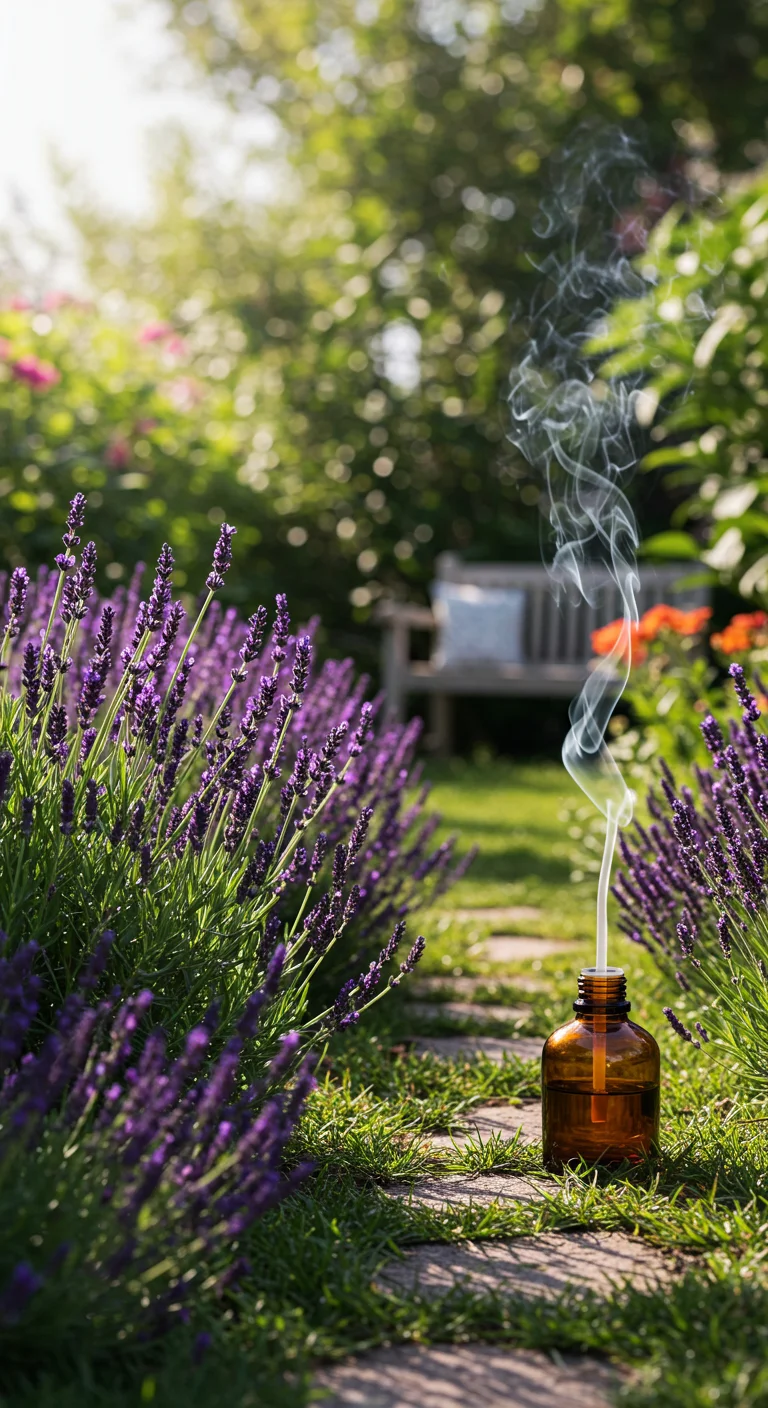
The power of scent plays a vital role in enhancing the atmosphere of your spiritual garden sanctuary, as aromatherapy can evoke emotions and foster tranquility. Incorporating fragrant plants such as lavender, rosemary, and jasmine can create a calming environment, encouraging meditation and reflection. Additionally, consider adding essential oil diffusers or incense burners in secluded areas of your garden to further amplify the sensory experience. For a more immersive approach, create a ‘scent trail’ by planting aromatic herbs along pathways, allowing visitors to engage with the aromas as they wander. Regularly tending to these fragrant elements not only nurtures the plants but also cultivates a deeper connection to nature and self, making your garden a true sanctuary for the spirit.
8. Water Features: Creating Tranquility with Fountains and Ponds
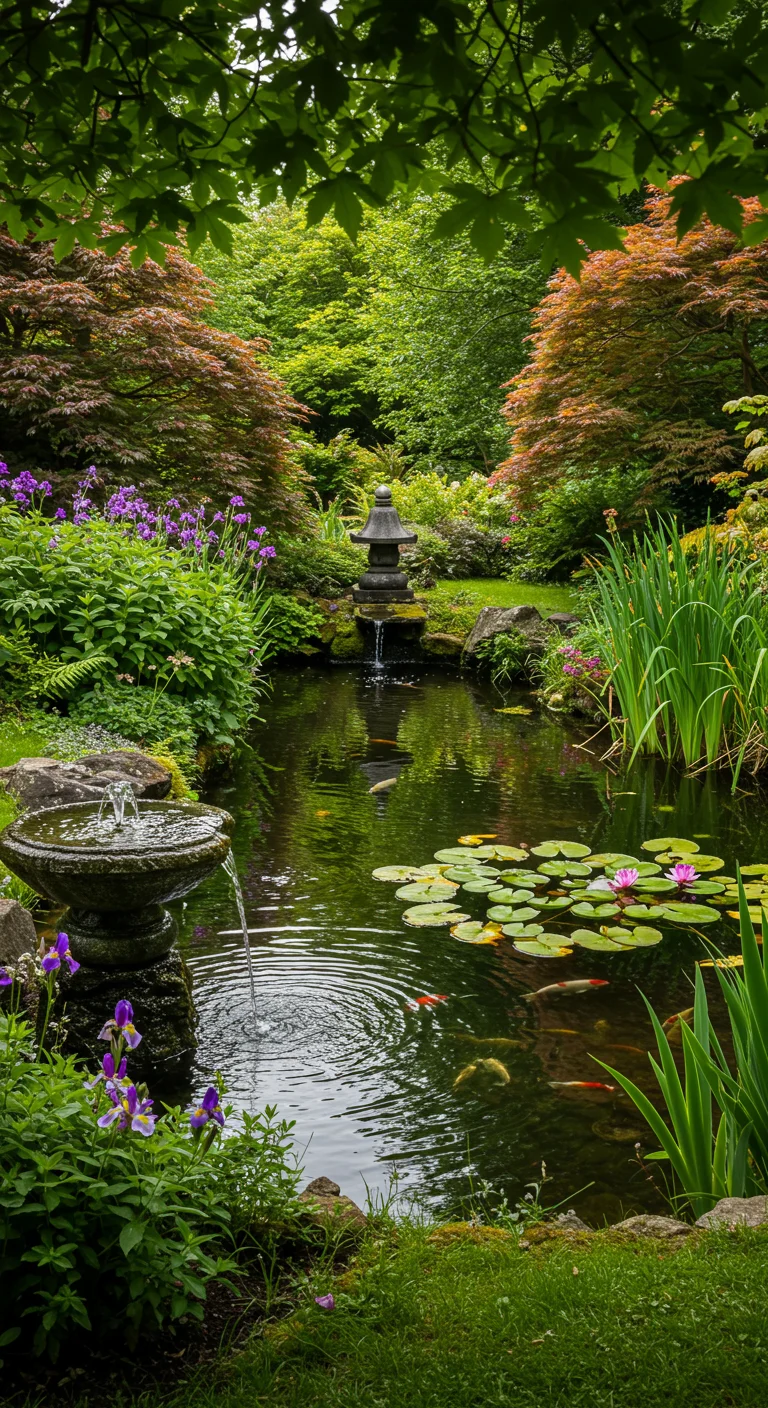
Incorporating water features such as fountains and ponds into your spiritual garden sanctuary can significantly enhance the sense of tranquility and mindfulness. Fountains, with their gentle trickling sounds, create a soothing atmosphere that encourages relaxation and meditation. Choose a design that complements your garden’s aesthetic, whether it’s a classic stone fountain or a modern tiered structure. Ponds, on the other hand, provide a serene focal point, attracting wildlife and adding visual depth. Surround your pond with native plants and stones to create a natural habitat that fosters peace. Additionally, consider incorporating reflective elements, like water lilies or koi fish, to symbolize serenity and harmony. Overall, water features not only beautify your space but also serve as a catalyst for spiritual reflection and connection with nature.
9. The Energy of Crystals: Enhancing Your Garden’s Vibe
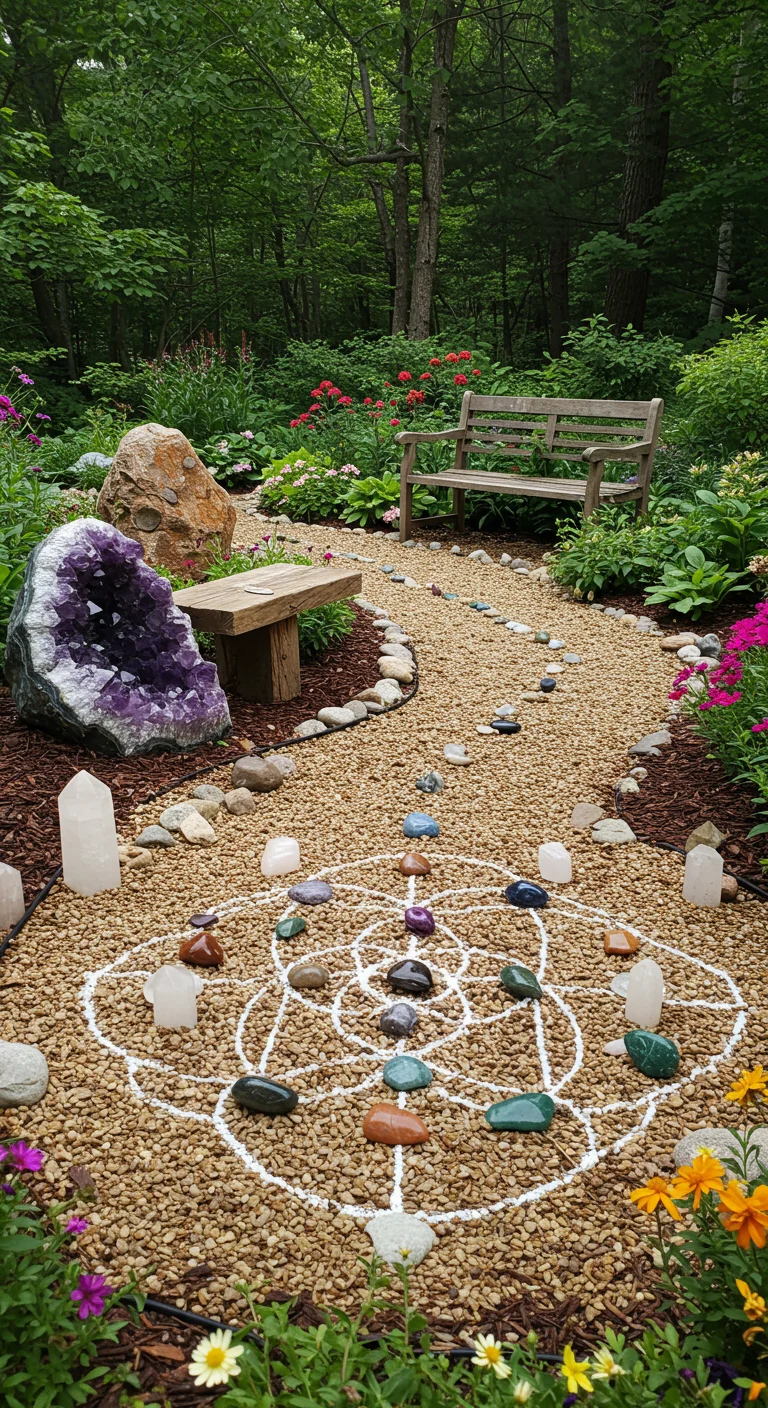
Crystals have long been believed to hold unique energies that can enhance the ambiance of your spiritual garden sanctuary. To incorporate crystals effectively, consider placing larger stones like amethyst or quartz at focal points, such as near a meditation bench or within a flower bed, to amplify tranquility and positivity. Smaller tumbled stones can be scattered along pathways or nestled among plants to invite specific energies—rose quartz for love, citrine for abundance, and black tourmaline for protection. Additionally, creating a crystal grid by arranging stones in geometric patterns can channel energy throughout the garden. Remember to cleanse your crystals regularly under running water or moonlight to maintain their vibrational integrity, ensuring your garden remains a serene and spiritually uplifted space for reflection and connection with nature.
10. Sacred Symbols: Statues and Art That Inspire Reflection
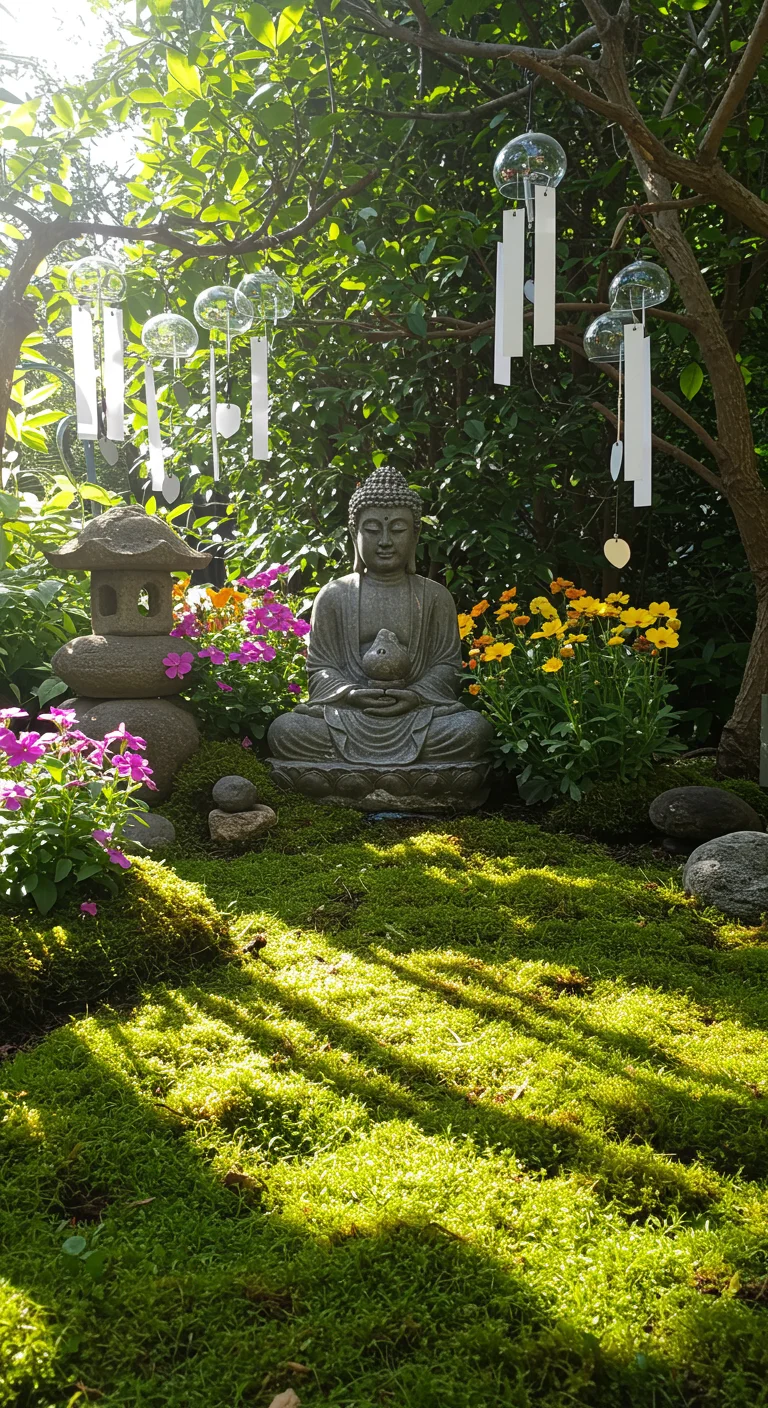
Incorporating sacred symbols through statues and art in your spiritual garden sanctuary can enhance its meditative atmosphere. Choose pieces that resonate with your personal beliefs or spiritual journey, such as a serene Buddha statue, a Celtic cross, or a figure of a beloved deity. Position these artworks thoughtfully among your plants, allowing them to harmonize with nature. Surrounding these symbols with vibrant flowers or soft moss can create a sense of tranquility and reflection. Additionally, consider including wind chimes or prayer flags nearby, which can add an auditory element to your sanctuary, inviting peaceful thoughts and contemplation. These artistic elements not only beautify the space but also serve as focal points for meditation and introspection, encouraging deeper connection with your inner self.
11. Meditation Zones: Crafting Your Personal Retreat
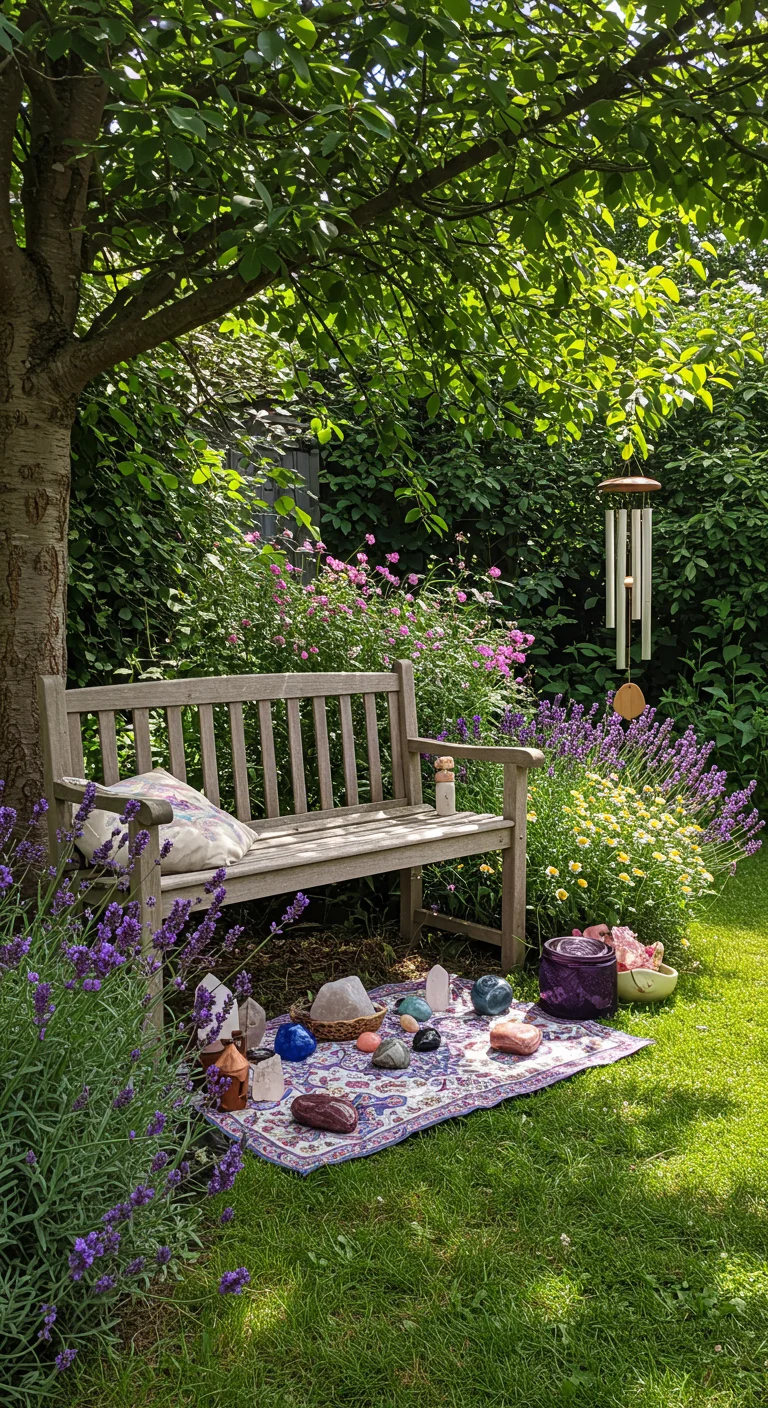
Creating meditation zones within your spiritual garden sanctuary can transform your outdoor space into a personal retreat for reflection and tranquility. Start by selecting a quiet, sheltered area that invites peace—this could be under a tree, beside a water feature, or within a flower-filled nook. Use natural materials to craft comfortable seating, such as a wooden bench or a cushioned mat, and enhance the ambiance with elements that resonate with you, like wind chimes, candles, or crystals. Incorporate plants known for their calming properties, such as lavender or chamomile, and consider adding a small altar with meaningful objects to deepen your practice. By intentionally designing your meditation zone, you create a dedicated space that encourages mindfulness and connects you to nature’s serenity.
12. Ritual Spaces: Areas for Ceremony and Connection
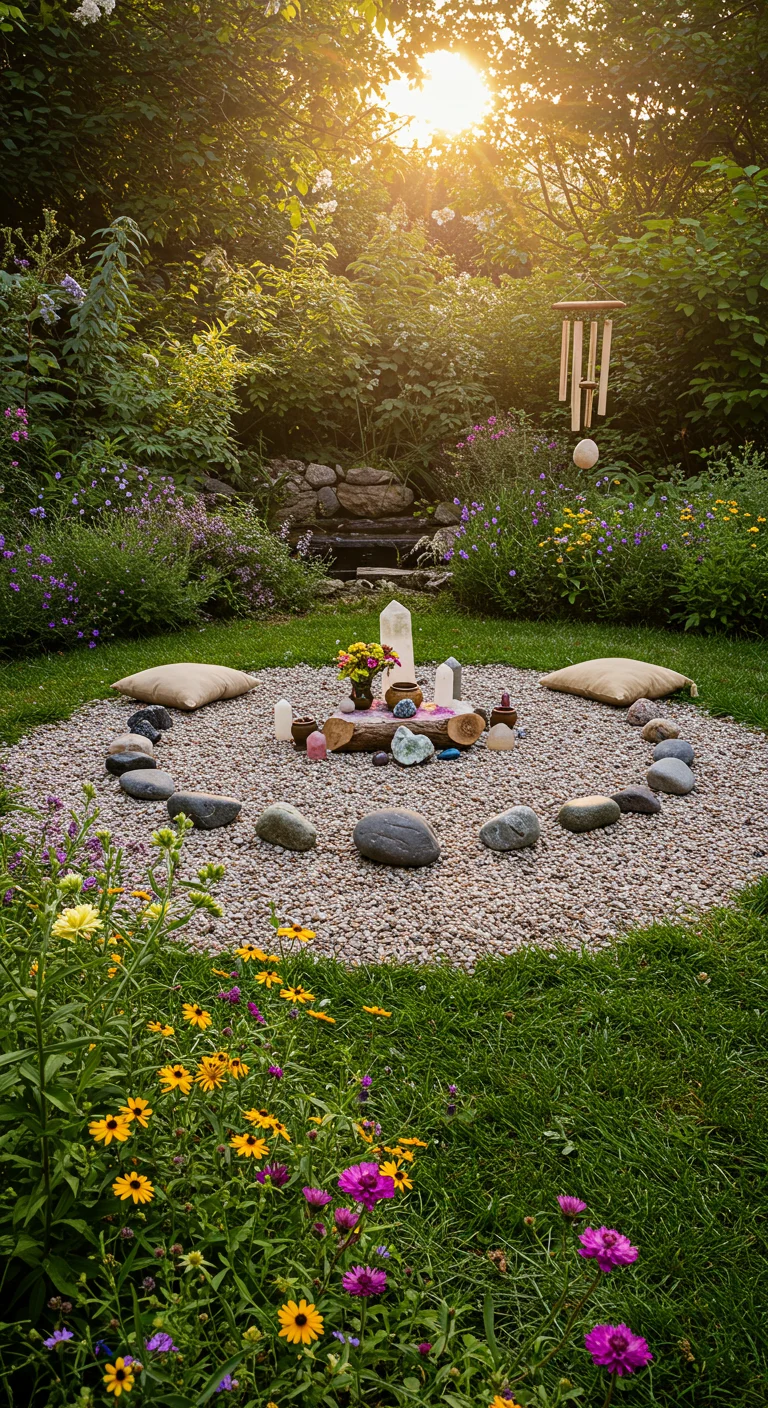
Creating dedicated ritual spaces within your spiritual garden can enhance your connection to nature and facilitate meaningful ceremonies. Consider incorporating a circular arrangement of stones or a simple altar made from natural materials such as wood or clay, where you can place meaningful objects like crystals, flowers, or candles. Surround this area with fragrant herbs or flowers to engage your senses, and include comfortable seating, such as a bench or cushions, to invite contemplation and connection. To add an element of serenity, think about installing a small water feature or a wind chime that can produce soothing sounds. This space should be tailored to your personal spiritual practices, making it a sanctuary for meditation, prayer, or celebration, allowing you to fully immerse yourself in the experience of your spiritual garden sanctuary.
13. Wildlife Welcome: Attracting Birds and Butterflies
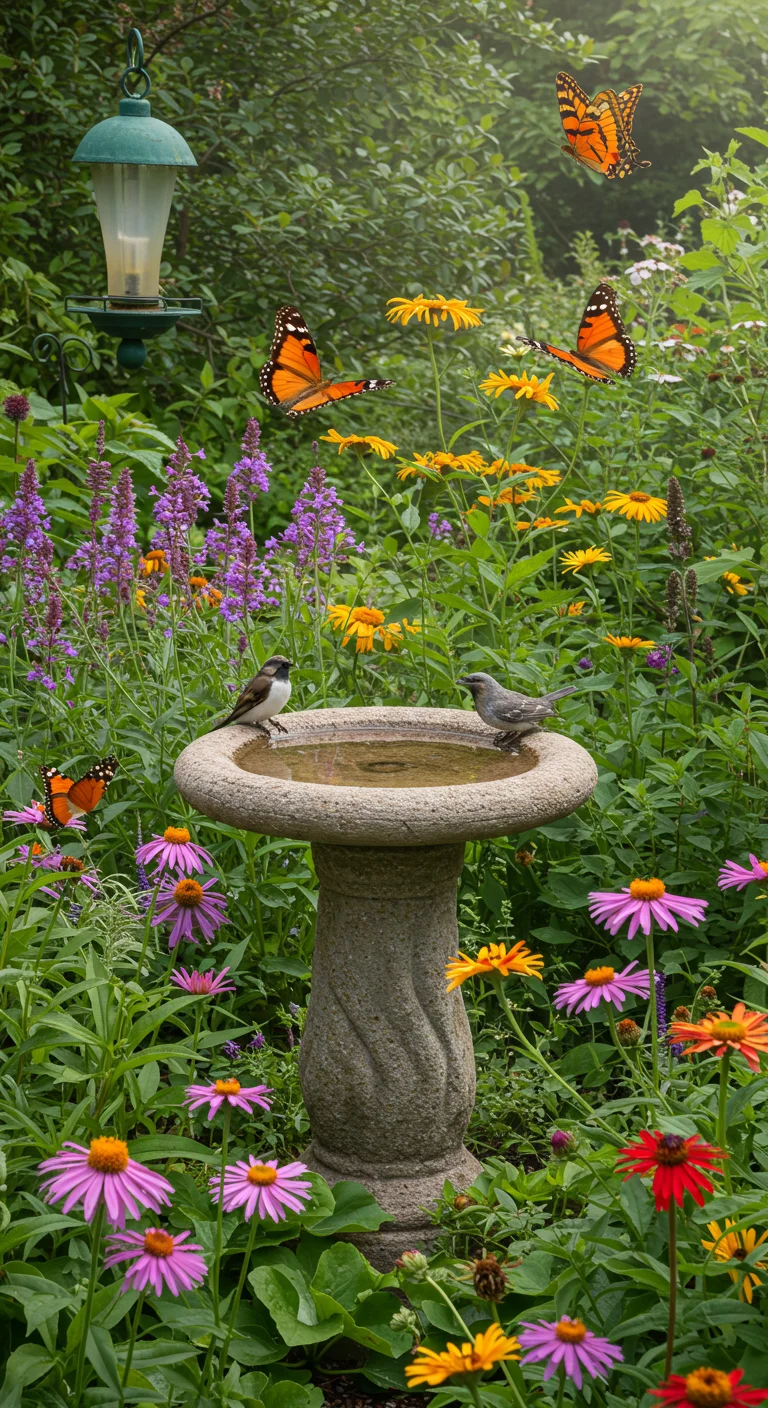
Creating a wildlife-friendly sanctuary in your spiritual garden can significantly enhance its tranquility and beauty. Start by planting native flowers that bloom at different times throughout the season; these will attract a variety of birds and butterflies. Consider adding a water source, such as a birdbath or a small pond, to provide hydration and a place for birds to bathe. Incorporate elements like bird feeders filled with seeds and nectar-rich plants like milkweed to support butterflies. Additionally, avoid using pesticides and opt for organic gardening methods to keep these delicate creatures safe. By fostering a thriving ecosystem, your garden will become a peaceful haven that not only soothes your spirit but also invites nature’s beauty closer to home.
14. Seasonal Changes: Embracing Nature’s Cycles
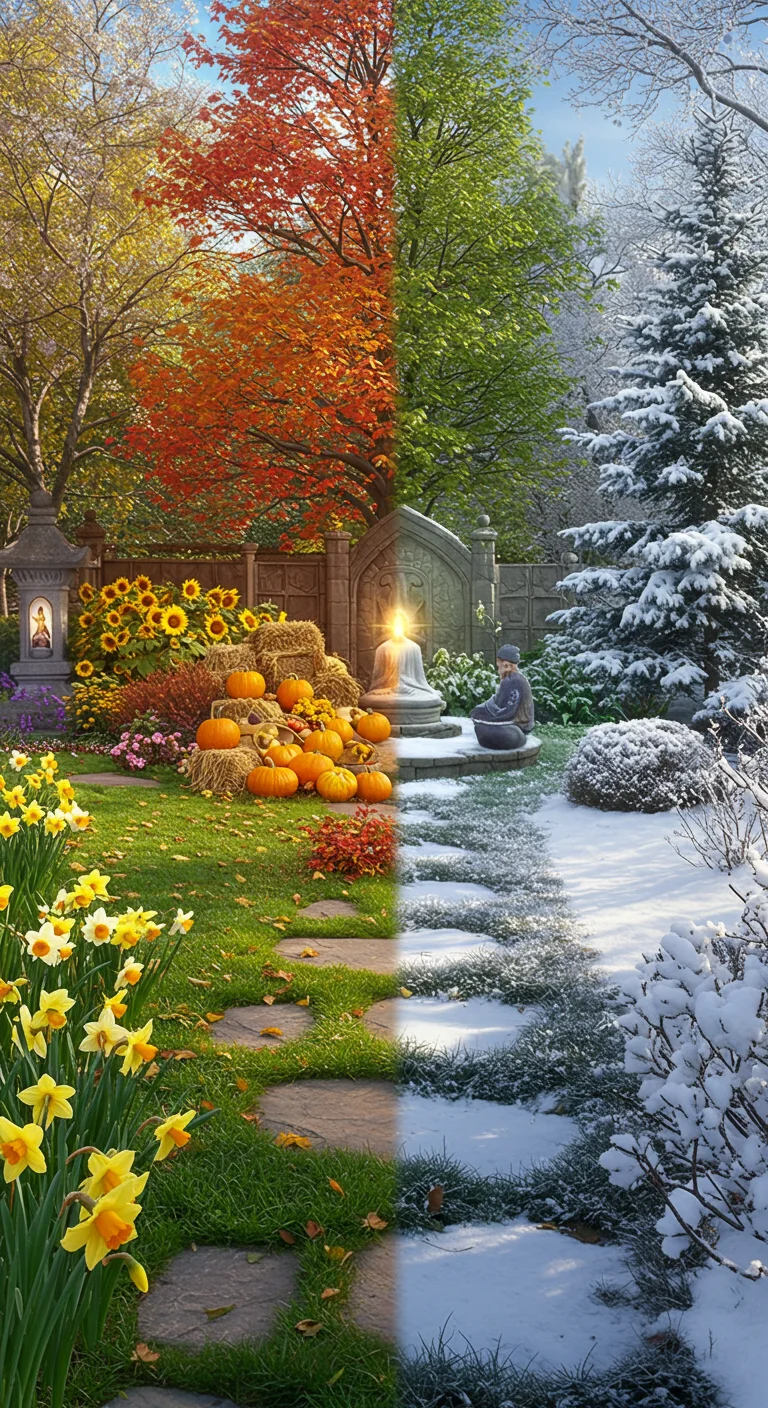
Seasonal changes offer a beautiful opportunity to embrace nature’s cycles in your spiritual garden sanctuary. Each season brings its own unique energy, colors, and scents, allowing you to create a dynamic environment that reflects the rhythm of the Earth. In spring, plant blooming flowers and herbs that symbolize renewal and growth, such as daffodils and lavender. Summer invites vibrant colors and lush foliage; consider adding sunflowers or zinnias to inspire joy and vitality. As autumn approaches, harvest your crops and decorate with pumpkins and fall leaves to celebrate abundance and gratitude. Winter can be a time for reflection; include evergreens and cozy seating to create a space for meditation and introspection. By aligning your garden’s design with the changing seasons, you cultivate a deeper connection to the natural world and foster a nurturing sanctuary for the spirit.
15. Mindful Gardening: Practices to Ground Your Spirit
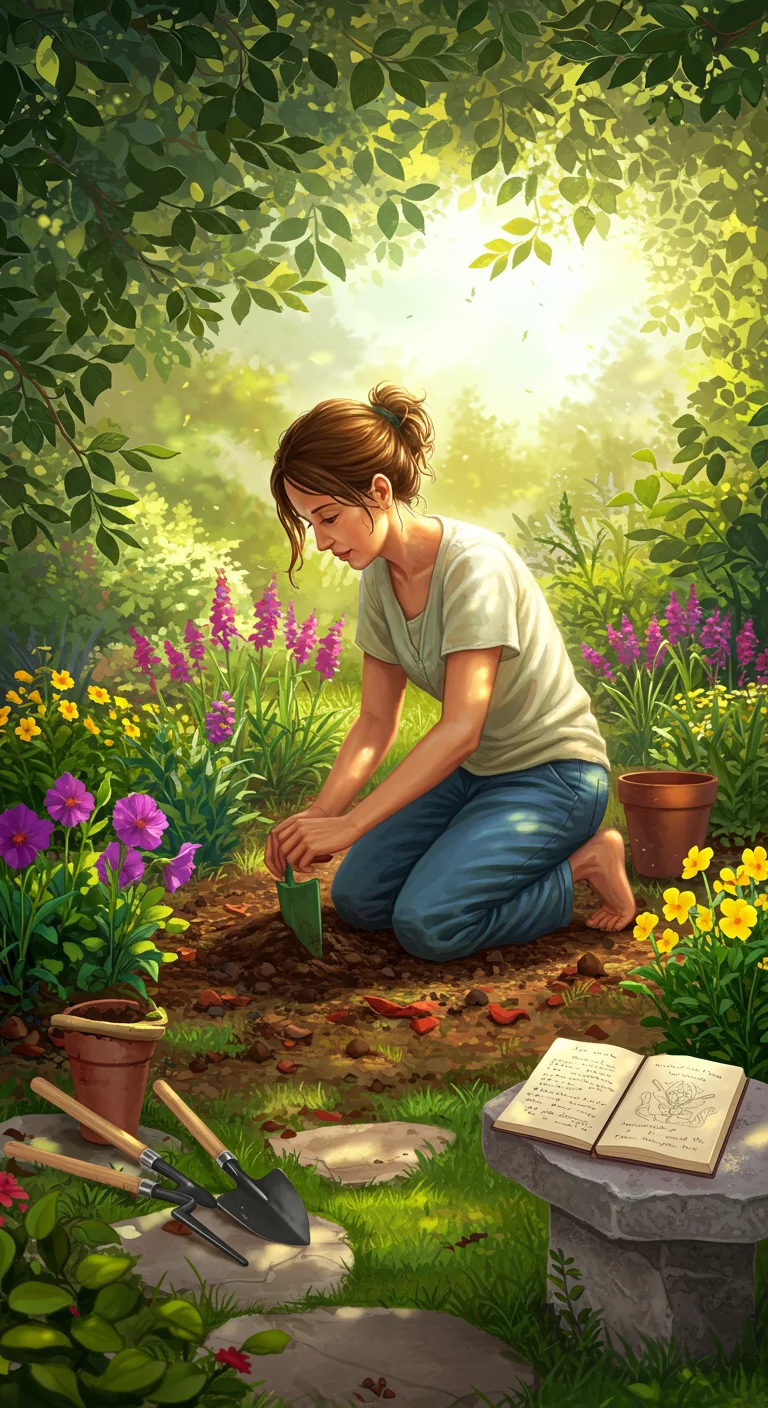
Mindful gardening is a powerful practice that fosters spiritual connection and grounding. To begin, find a tranquil area in your garden where you can integrate mindfulness techniques, such as deep breathing or meditation. As you tend to your plants, engage your senses fully: feel the texture of the soil, listen to the rustling leaves, and observe the vibrant colors of the blooms. Consider planting herbs or flowers that resonate with your spiritual intentions, like lavender for calmness or rosemary for clarity. Schedule regular gardening sessions to cultivate a routine that allows you to reflect and connect with nature. Journaling your thoughts and emotions after each session can enhance this practice, turning your gardening into a sacred ritual that nurtures both your spirit and the earth.
16. The Art of Zen: Minimalist Design for Maximum Peace
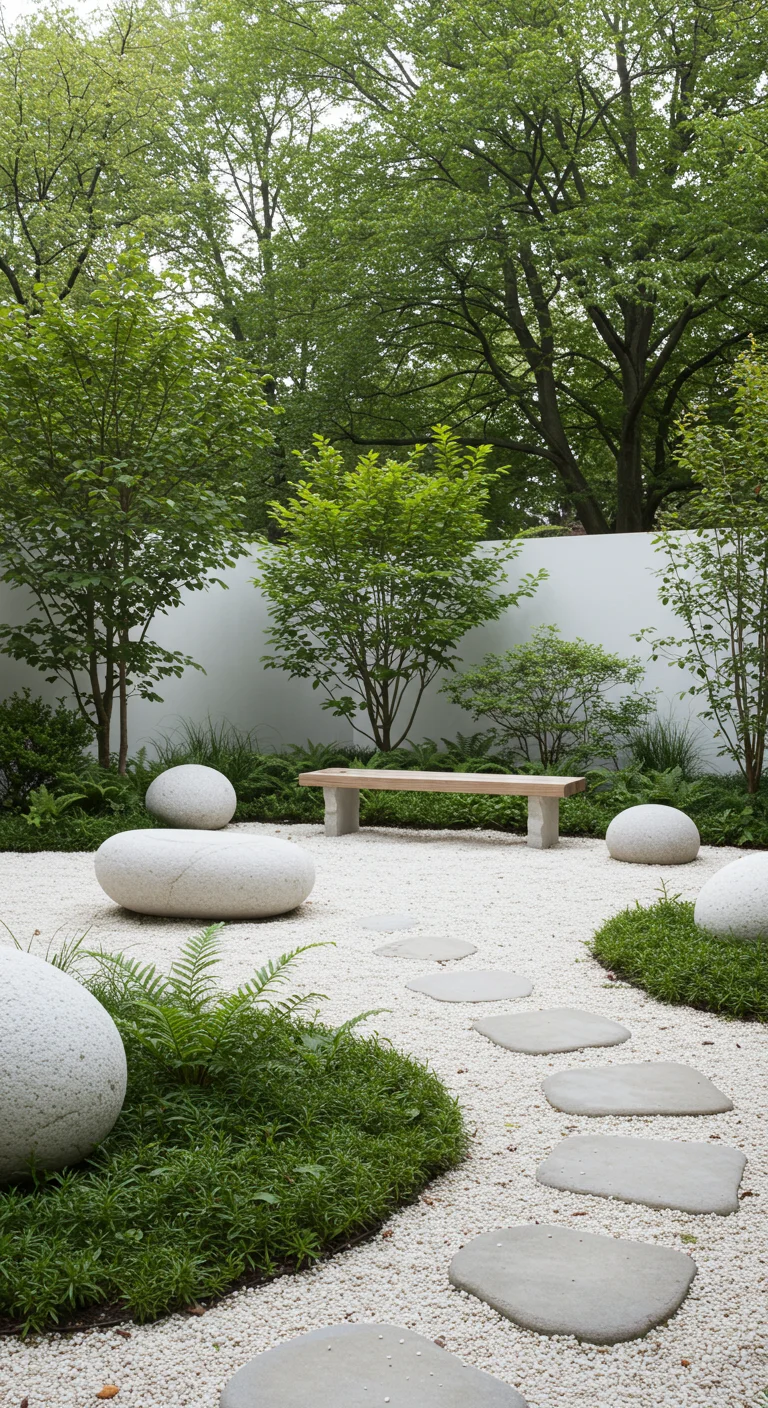
The Art of Zen emphasizes the beauty of simplicity, making minimalist design a powerful tool for fostering tranquility in your spiritual garden sanctuary. To achieve this, focus on a few key elements: select a limited color palette using soft, natural hues like whites, greens, and earth tones. Opt for uncomplicated shapes in garden structures and furnishings, such as smooth stones, simple benches, or bamboo accents, which can create a serene atmosphere. Incorporate open spaces that allow for easy movement and contemplation, and integrate natural materials that blend seamlessly with the environment. Lastly, reduce clutter by carefully curating plants and decor, choosing only those that resonate deeply with your spirit, ensuring that your garden remains a peaceful retreat for reflection and rejuvenation.
17. Garden Journals: Documenting Your Spiritual Journey
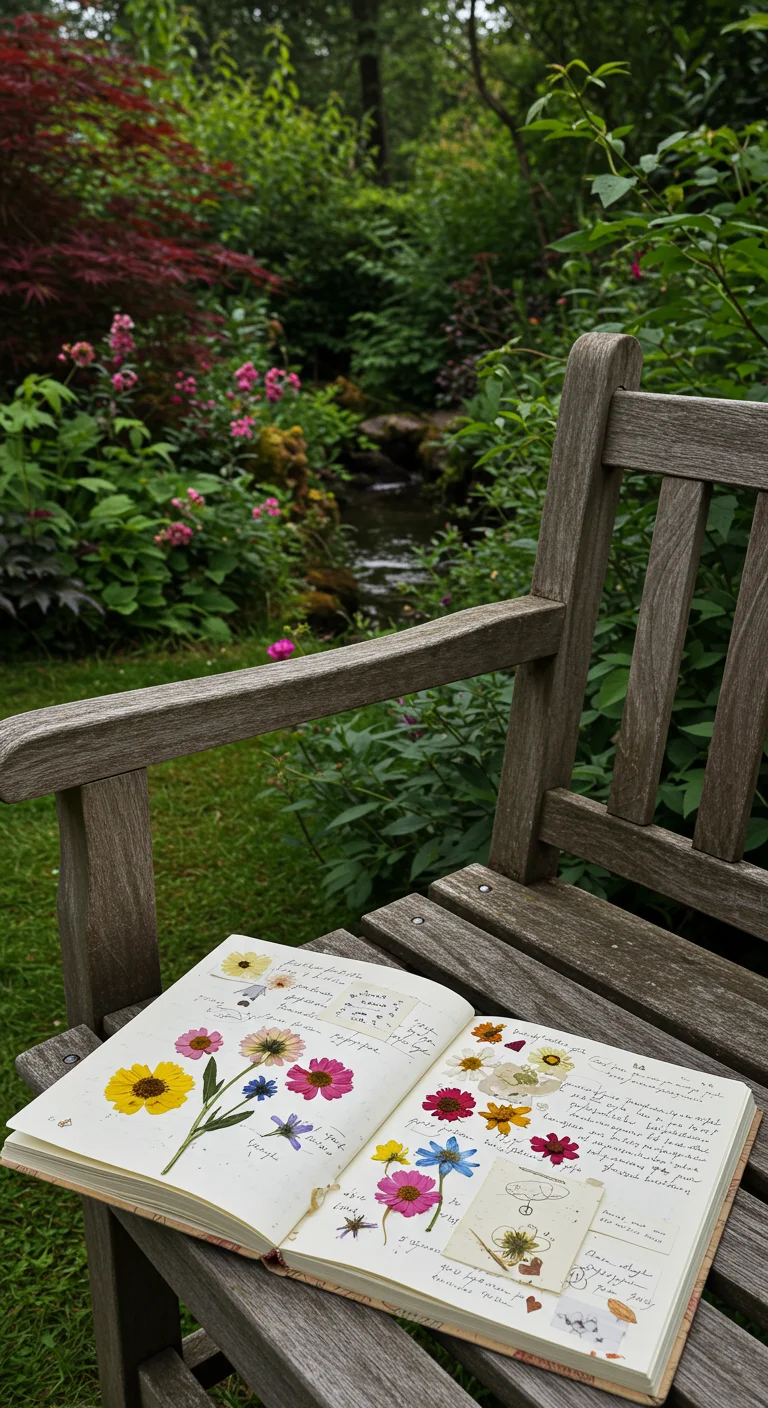
Garden journals serve as a powerful tool for documenting your spiritual journey within your sanctuary. This practice not only allows you to track the growth of your plants but also encourages reflection on your personal development and experiences. Begin by jotting down your thoughts, feelings, and observations related to your garden activities, such as planting rituals, meditation sessions, or even the sounds and sights that surround you. Consider incorporating sketches, photographs, or pressed flowers to make your journal visually appealing and deeply personal. By regularly revisiting your entries, you can witness the evolution of your spiritual path and find insights that foster a deeper connection to nature and yourself. Ultimately, your garden journal will become a cherished record of your growth and transformation, enriching your spiritual sanctuary.
18. Community Connections: Sharing Your Sanctuary with Others
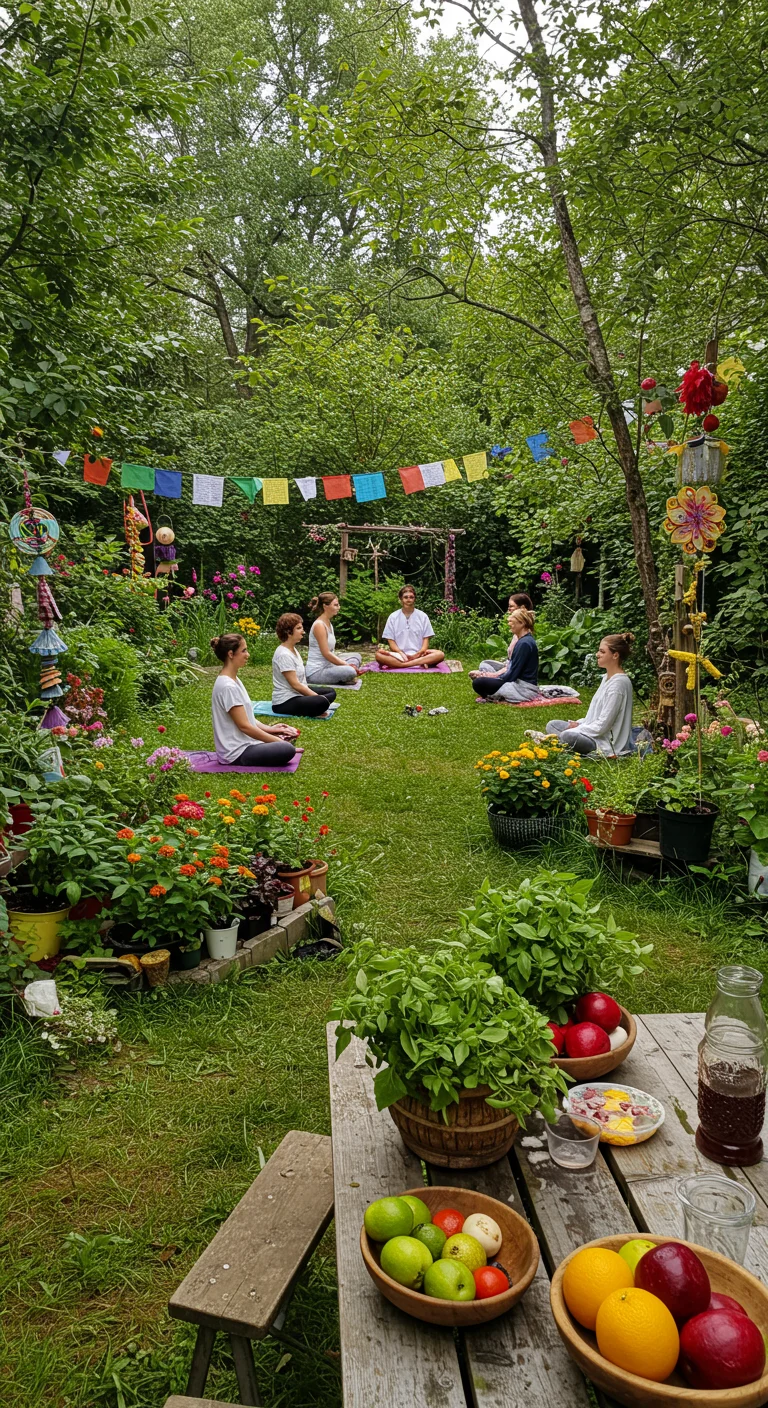
Creating a spiritual garden sanctuary is not just a personal journey; it can also be a communal experience that nurtures connections with others. Invite friends and family to participate in garden activities such as planting, meditating, or hosting small gatherings that celebrate nature and spirituality. Consider organizing workshops or classes focused on mindfulness, herbalism, or eco-friendly gardening techniques that can deepen everyone’s connection to the space. Additionally, sharing your garden’s bounty through community potlucks or open days can encourage others to appreciate the beauty and tranquility of nature. By fostering these connections, you not only enrich your own spiritual practice but also create a supportive network that enhances the communal experience of your sanctuary.
19. The Role of Sound: Wind Chimes and Natural Melodies
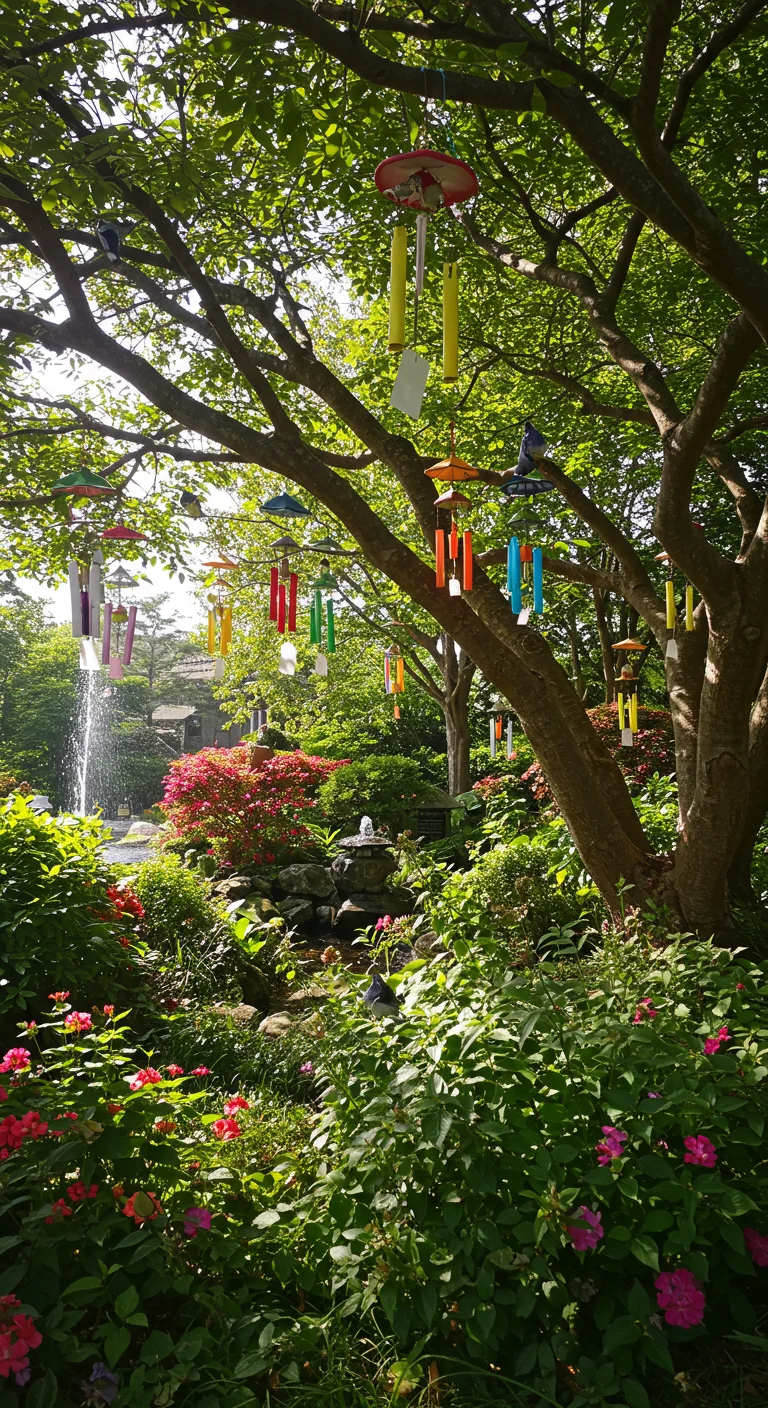
Incorporating sound into your spiritual garden sanctuary can significantly enhance the ambiance and foster a deeper connection with nature. Wind chimes, made from various materials like bamboo, metal, or glass, create soothing melodies that can calm the mind and uplift the spirit as they dance in the breeze. Choose chimes that resonate with your personal aesthetic or spiritual beliefs, placing them strategically among your plants to catch the wind. Additionally, consider the natural sounds of your garden, such as the rustling of leaves, chirping birds, or the gentle trickle of a water feature. These organic melodies contribute to a serene atmosphere, inviting mindfulness and meditation. Engaging with these sounds can help you cultivate a more profound sense of peace and spirituality within your sanctuary.
20. Evening Enchantment: Lighting Your Garden for Magic
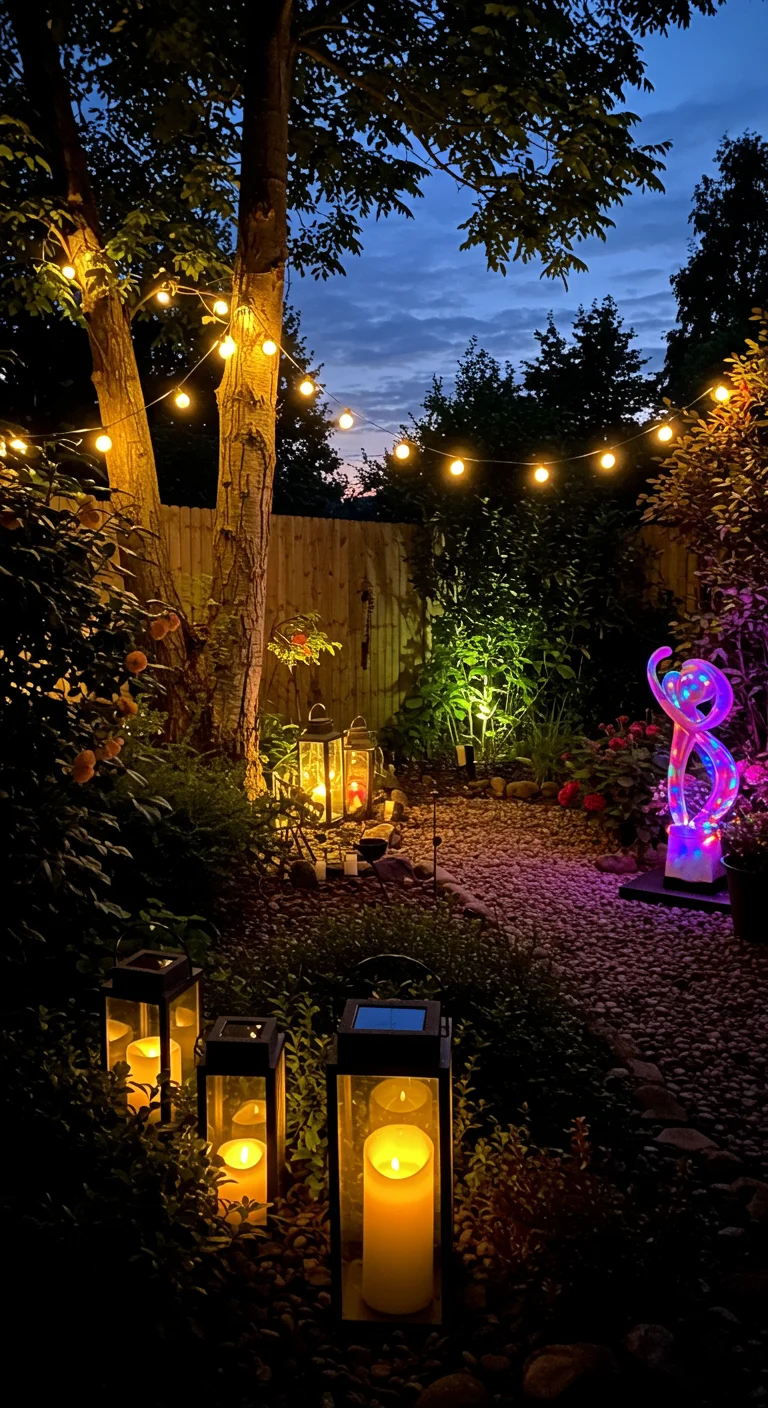
Transform your garden into an enchanting evening retreat by incorporating soft, ambient lighting that enhances its natural beauty. Start with string lights draped across trees or along fences, creating a whimsical glow. Use solar-powered lanterns and fairy lights nestled among your plants for a subtle sparkle that invites tranquility. Consider adding ground-level lighting to highlight pathways, ensuring safe navigation while adding an ethereal touch. For a more intimate atmosphere, place candles in decorative holders on tables or within the foliage, where their flicker can dance with the night breeze. Finally, use colored LED lights to illuminate focal points like sculptures or water features, creating a magical ambiance that draws you into the serenity of your spiritual sanctuary as the sun sets.
21. Seasonal Offerings: Celebrating Nature’s Gifts Year-Round
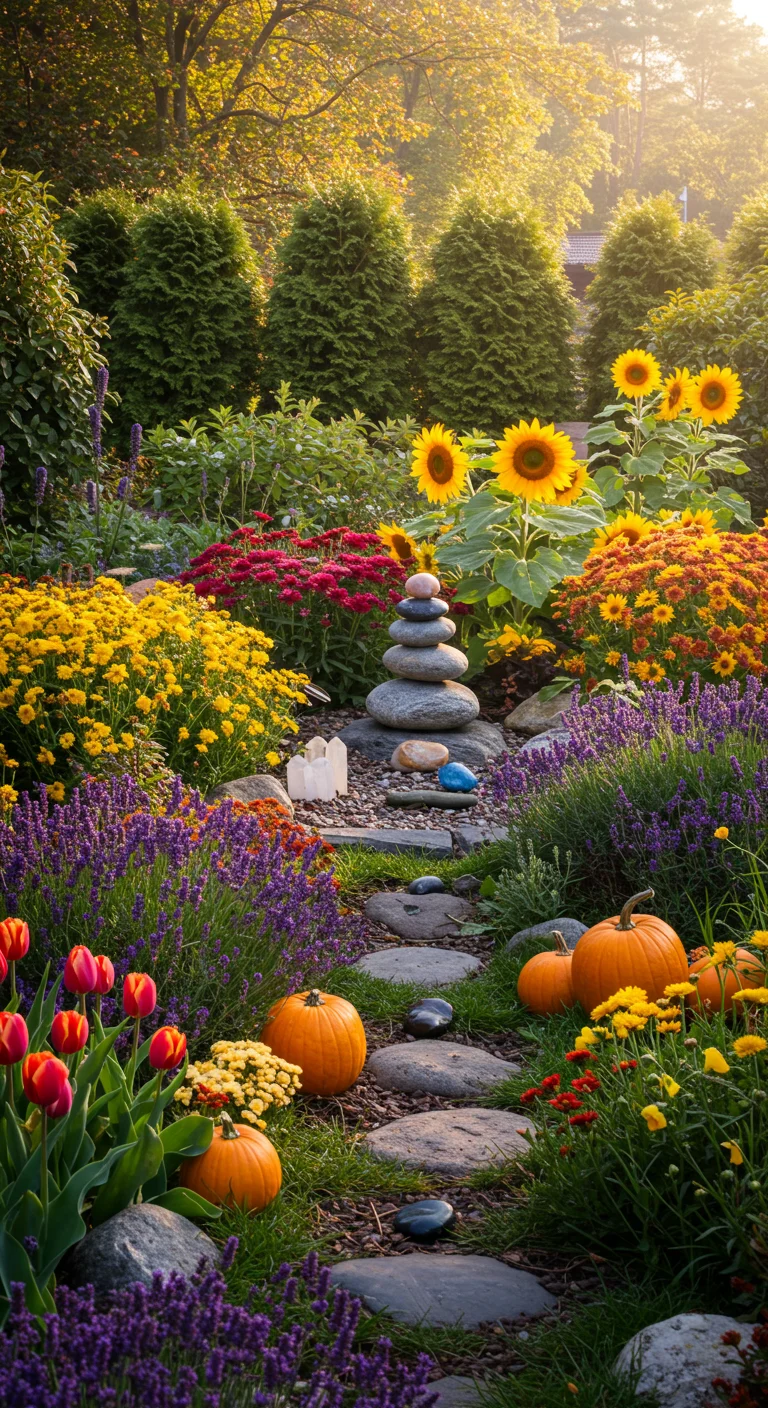
Embrace the rhythm of nature by incorporating seasonal offerings into your spiritual garden sanctuary. Design your garden to feature plants, herbs, and flowers that bloom or bear fruit throughout the year, creating a dynamic, ever-changing landscape. For spring, consider vibrant tulips and fragrant lavender; summer can be enriched with sunflowers and bountiful tomatoes; fall can showcase rich hues of chrysanthemums and pumpkins; and winter can feature evergreen shrubs and seasonal decorations. Additionally, practice mindful rituals corresponding to each season, such as planting seeds during spring equinox or harvesting herbs in summer, to deepen your connection with nature’s cycles. This approach not only enhances the beauty of your garden but also fosters a sense of gratitude for the gifts that each season brings.
22. Guided Meditations: Using Your Garden as a Sanctuary
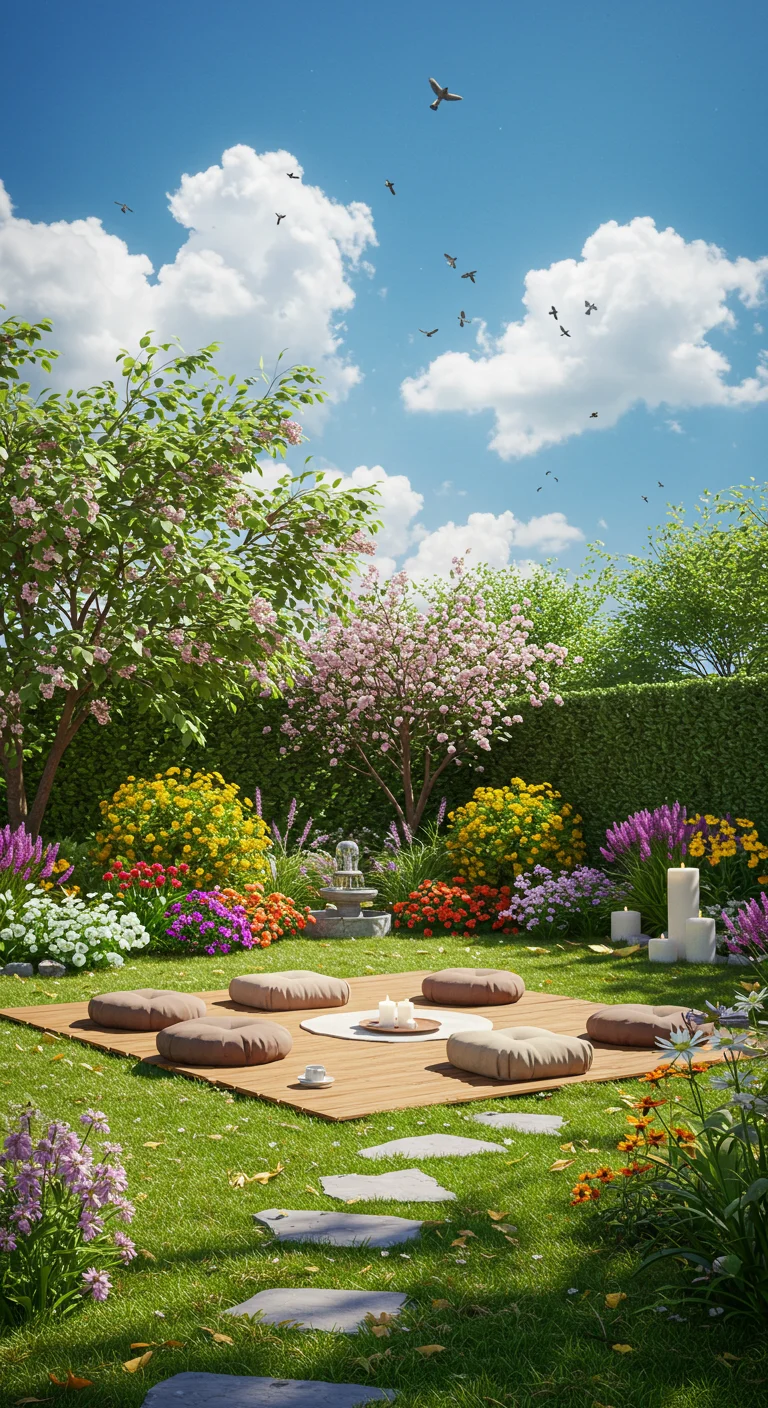
Guided meditations in your garden can transform your outdoor space into a personal sanctuary that nurtures your spirit. Begin by selecting a quiet corner adorned with vibrant flowers and gentle foliage, where natural sounds like birdsong and rustling leaves can enhance your experience. Find a comfortable spot to sit or lie down, close your eyes, and focus on your breath. Visualize the energy of the plants surrounding you, imagining their roots intertwining with your own. Use guided meditation apps or recordings that focus on nature, allowing the serene ambiance of your garden to deepen your connection to the earth. With consistent practice, this ritual can cultivate mindfulness and healing, fostering a sense of peace and spiritual growth in your daily life.
23. Continual Growth: Evolving Your Spiritual Garden Practice
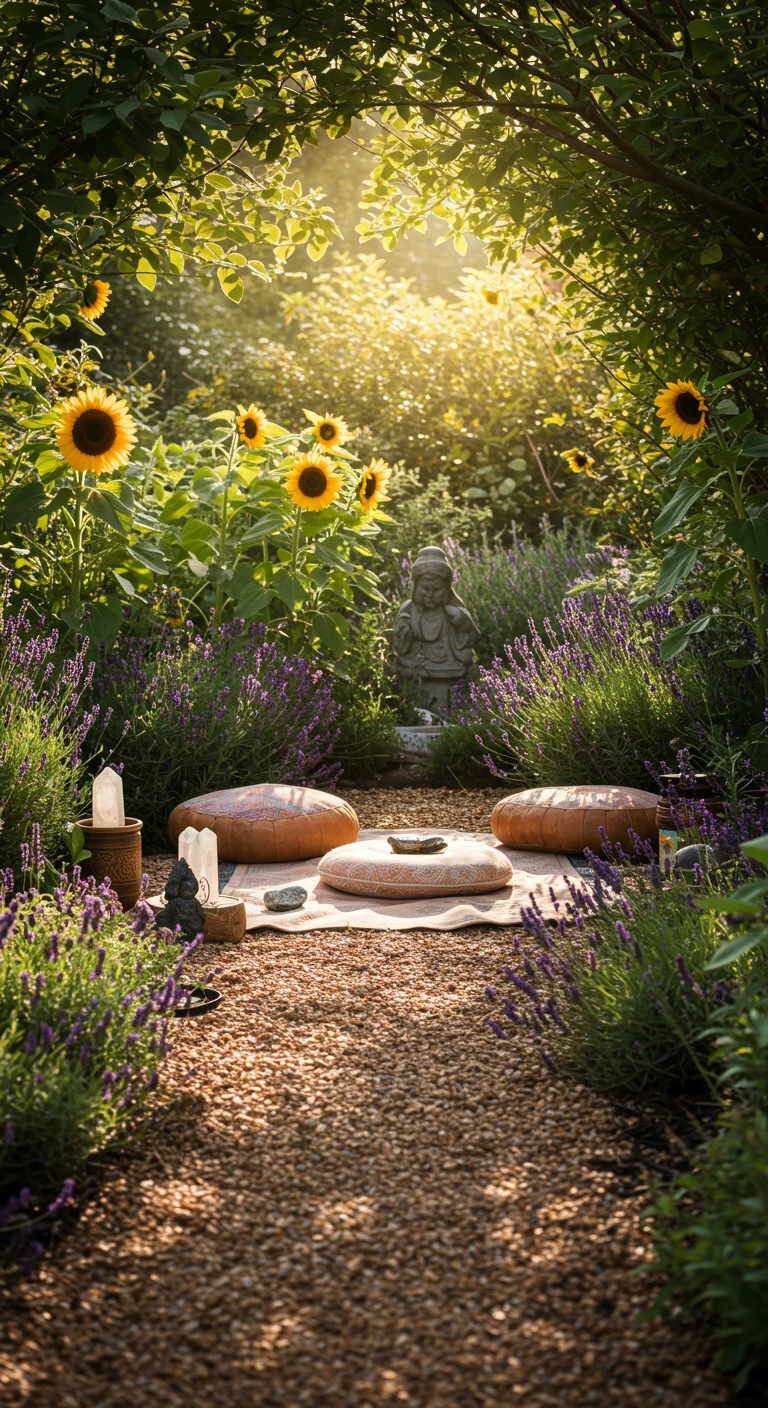
Continual growth in your spiritual garden practice involves regularly evaluating and refreshing your space to align with your evolving spiritual needs. Start by introducing seasonal plants that resonate with your intentions, such as lavender for calmness or sunflowers for positivity. Incorporate new elements like crystals, meaningful sculptures, or fragrant herbs that enhance the atmosphere and invite reflection. Additionally, schedule time for mindful meditation or journaling in your garden, allowing you to connect deeper with the energy around you. Engage with the natural cycles of growth and decay, embracing change as a part of your spiritual journey. This ongoing process not only nurtures your garden but also fosters personal transformation and deeper connections with the universe.






